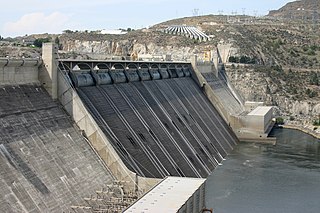 W
WInfrastructure is the set of fundamental facilities and systems that support the sustainable functionality of households and firms. Serving a country, city, or other area, including the services and facilities necessary for its economy to function. Infrastructure is composed of public and private physical structures such as roads, railways, bridges, tunnels, water supply, sewers, electrical grids, and telecommunications. In general, infrastructure has been defined as "the physical components of interrelated systems providing commodities and services essential to enable, sustain, or enhance societal living conditions" and maintain the surrounding environment.
 W
WPublic infrastructure is infrastructure owned or available for use by the public. It is distinguishable from generic or private infrastructure in terms of policy, financing, purpose, etc.
 W
WPublic works are a broad category of infrastructure projects, financed and constructed by the government, for recreational, employment, and health and safety uses in the greater community. They include public buildings, transport infrastructure, public spaces, public services, and other, usually long-term, physical assets and facilities. Though often interchangeable with public infrastructure and public capital, public works does not necessarily carry an economic component, thereby being a broader term.
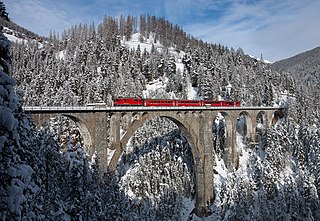 W
WA bridge is a structure built to span a physical obstacle, such as a body of water, valley, or road, without closing the way underneath. It is constructed for the purpose of providing passage over the obstacle, usually something that is otherwise difficult or impossible to cross. There are many different designs that each serve a particular purpose and apply to different situations. Designs of bridges vary depending on the function of the bridge, the nature of the terrain where the bridge is constructed and anchored, the material used to make it and the funds available to build it.
 W
WCanals are waterways channels, or artificial waterways, for water conveyance, or to service water transport vehicles. They may also help with irrigation. It can be thought of as an artificial version of a river. Canals carry free surface flow under atmospheric pressure.
 W
WThe Central Vista Redevelopment Project is an ongoing redevelopment project to revamp the Central Vista in New Delhi, India.
 W
WCritical infrastructure is a term used by governments to describe assets that are essential for the functioning of a society and economy – the infrastructure. Most commonly associated with the term are facilities for:Shelter; Heating ; Agriculture, food production and distribution; Water supply ; Public health ; Transportation systems ; Security services. Electricity generation, transmission and distribution; Renewable energy, which are naturally replenished on a human timescale, such as sunlight, wind, rain, tides, waves, and geothermal heat. Telecommunication; coordination for successful operations Economic sector; Goods and services and financial services ;
 W
WCritical infrastructure protection (CIP) is a concept that relates to the preparedness and response to serious incidents that involve the critical infrastructure of a region or nation.
 W
WA detention basin or retarding basin is an excavated area installed on, or adjacent to, tributaries of rivers, streams, lakes or bays to protect against flooding and, in some cases, downstream erosion by storing water for a limited period of time. These basins are also called "dry ponds", "holding ponds" or "dry detention basins" if no permanent pool of water exists. Detention ponds that are designed to permanently retain some volume of water at all times are called retention basins. In its basic form, a detention basin is used to manage water quantity while having a limited effectiveness in protecting water quality, unless it includes a permanent pool feature.
 W
WElectricity generation is the process of generating electric power from sources of primary energy. For utilities in the electric power industry, it is the stage prior to its delivery to end users or its storage.
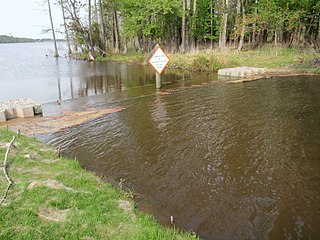 W
WA flow control structure is a device that alters the flow of water in a stream, drainage channel or pipe. As a group these are passive structures since they operate without intervention under different amounts of water flow and their impact changes based on the quantity of water available. This includes weirs, flow splitters and proprietary-design devices that are used for stormwater management and in combined sewers.
 W
WGas lighting is production of artificial light from combustion of a gaseous fuel, such as hydrogen, methane, carbon monoxide, propane, butane, acetylene, ethylene, coal gas or natural gas.
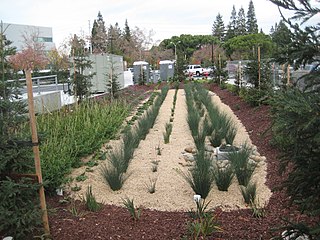 W
WGreen infrastructure is defined in the United States by section 502 of the Clean Water Act as the range of measures that use plant or soil systems, permeable surfaces, stormwater harvest and reuse, infiltrate or evapotranspirate stormwater and reduce flows to sewer systems or to surface waters. Green infrastructure encompasses various water management practices such as vegetated rooftops, absorbent gardens and other measures to capture, filter, and reduce stormwater. Green infrastructure prevents or reduces the amount of water that flows into storm drains and is proved as an important tool for cities with combined sewer overflows and nutrient problems. It provides many environmental, social, and economic benefits such as improved surface water quality, water conservation, and community safety. Green Infrastructure is a cost effective and resilient approach to managing stormwater. While gray stormwater infrastructure is designed to move stormwater away from the built environment, green infrastructure treats the water at the source.
 W
WA harbor or harbour is a sheltered body of water where ships, boats, and barges can be docked. The term harbor is often used interchangeably with port, which is a man-made facility built for loading and unloading vessels and dropping off and picking up passengers. Ports usually include one or more harbors. Alexandria Port in Egypt is an example of a port with two harbors.
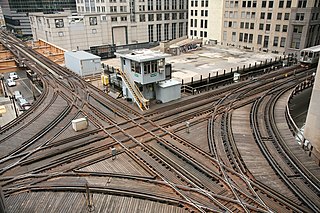 W
WHard infrastructure,, is the physical infrastructure of roads, bridges, tunnels, railways, ports, and harbors, among others, as opposed to the soft infrastructure or "intangible infrastructure of human capital in the form of education, research, health and social services and "institutional infrastructure" in the form of legal, economic and social systems. This article delineates both the capital goods, or fixed assets, and the control systems, software required to operate, manage and monitor the systems, as well as any accessory buildings, plants, or vehicles that are an essential part of the system. Also included are fleets of vehicles operating according to schedules such as public transit buses and garbage collection, as well as basic energy or communications facilities that are not usually part of a physical network, such as oil refineries, radio, and television broadcasting facilities.
 W
WHasankeyf was an ancient town and district located along the Tigris River in the Batman Province in southeastern Turkey. It was declared a natural conservation area by Turkey in 1981.
 W
WHigh-voltage transformer fire barriers, or transformer firewalls, transformer ballistic firewalls, transformer blast walls, are outdoor countermeasures against cascading failures in a national electric grid. The purpose of these barriers, like common fire barriers in building construction, is compartmentalisation of transformer fires, as well as transformer and bushing explosions where the fuel source of both fires and explosions is the transformer oil. Without compartmentalisation, one ruptured transformer could start its neighbouring transformer on fire and thus create a domino effect that can affect the surrounding electric grid, particularly during peak times.
 W
WAn infiltration basin, is a type of device that is used to manage stormwater runoff, prevent flooding and downstream erosion, and improve water quality in an adjacent river, stream, lake or bay. It is essentially a shallow artificial pond that is designed to infiltrate stormwater through permeable soils into the groundwater aquifer. Infiltration basins do not release water except by infiltration, evaporation or emergency overflow during flood conditions.
 W
WInfrastructure asset management is the integrated, multidisciplinary set of strategies in sustaining public infrastructure assets such as water treatment facilities, sewer lines, roads, utility grids, bridges, and railways. Generally, the process focuses on the later stages of a facility's life cycle, specifically maintenance, rehabilitation, and replacement. Asset management specifically uses software tools to organize and implement these strategies with the fundamental goal to preserve and extend the service life of long-term infrastructure assets which are vital underlying components in maintaining the quality of life in society and efficiency in the economy. In the 21st century, climate change adaptation has become an important part of infrastructure asset management competence.
 W
WThe infrastructure policy of Donald Trump includes ensuring U.S. energy independence, safeguarding the cybersecurity of the national power grid and other critical infrastructure, locking China out of the U.S. fifth-generation Internet market, and rolling back regulations to ease the process of planning and construction. While there have been no major infrastructure spending packages yet, some individual policies and projects have advanced piecemeal, especially in rural areas.
 W
WLinear infrastructure intrusions into natural ecosystems are man-made linear infrastructure such as roads and highways, electric power lines, railway lines, canals, pipelines, firebreaks, and fences. These intrusions cause linear opening through the habitat or breakage in landscape connectivity due to infrastructure creation and maintenance, which is known to have multiple ecological effects in terrestrial and aquatic ecosystems. These effects include habitat loss and fragmentation, spread of invasive alien species, desiccation, windthrow, fires, animal injury and mortality, changes in animal behaviour, pollution, microclimate and vegetation changes, loss of ecosystem services, increased pressures from development, tourism, hunting, garbage disposal, and associated human disturbances. These intrusions, considered crucial infrastructure for economic sectors such as transportation, power, and irrigation, may also have negative social impacts on indigenous and rural people through exposure to novel social and market pressures, loss of land and displacement, and iniquitous distribution of costs and benefits from infrastructure projects. The study of the ecological effects of linear infrastructure intrusions has spawning sub-fields of research such as road ecology and railroad ecology.
 W
WMegaprojects and Risk: An Anatomy of Ambition is a 2003 book by Bent Flyvbjerg, Nils Bruzelius, and Werner Rothengatter, published by Cambridge University Press. According to chief economist and director of transportation policy at Infrastructure Management Group, Inc., Porter K. Wheeler, "this book makes an important contribution to understanding the infrastructure development process worldwide, with focus on megaprojects." The New Scientist wrote upon publication, "Love them or loathe them, megaprojects capture the imagination. [This] damning analysis concentrates on a series of financial nightmares that should bring even the most casual reader out in a sweat."
 W
WA photovoltaic power station, also known as a solar park, solar farm, or solar power plant is a large-scale photovoltaic system designed for the supply of merchant power into the electricity grid. They are differentiated from most building-mounted and other decentralised solar power applications because they supply power at the utility level, rather than to a local user or users. The generic expression utility-scale solar is sometimes used to describe this type of project.
 W
WPipeline transport is the long-distance transportation of a liquid or gas through a system of pipes—a pipeline—typically to a market area for consumption. The latest data from 2014 gives a total of slightly less than 2,175,000 miles (3,500,000 km) of pipeline in 120 countries of the world. The United States had 65%, Russia had 8%, and Canada had 3%, thus 75% of all pipeline were in these three countries.
 W
WA port is a maritime facility which may comprise one or more wharves where ships may dock to load and discharge passengers and cargo. Although usually situated on a sea coast or estuary, some ports, such as Hamburg, Manchester and Duluth, are many miles inland, with access to the sea via river or canal. Because of their roles as a port of entry for immigrants many port cities such as London, New York, Shanghai, Los Angeles, Singapore and Vancouver have experienced dramatic multi-ethnic and multicultural changes.
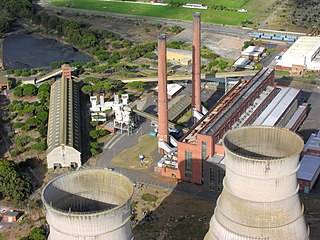 W
WA power station, also referred to as a power plant and sometimes generating station or generating plant, is an industrial facility for the generation of electric power. Power stations are generally connected to an electrical grid.
 W
WRadio is the technology of signaling and communicating using radio waves. Radio waves are electromagnetic waves of frequency between 30 hertz (Hz) and 300 gigahertz (GHz). They are generated by an electronic device called a transmitter connected to an antenna which radiates the waves, and received by a radio receiver connected to another antenna. Radio is very widely used in modern technology, in radio communication, radar, radio navigation, remote control, remote sensing and other applications.
 W
WRadio masts and towers are typically tall structures designed to support antennas for telecommunications and broadcasting, including television. There are two main types: guyed and self-supporting structures. They are among the tallest human-made structures. Masts are often named after the broadcasting organizations that originally built them or currently use them.
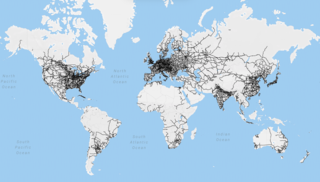 W
WRail transport is a means of transferring passengers and goods on wheeled vehicles running on rails, which are located on tracks. In contrast to road transport, where the vehicles run on a prepared flat surface, rail vehicles are directionally guided by the tracks on which they run. Tracks usually consist of steel rails, installed on ties (sleepers) set in ballast, on which the rolling stock, usually fitted with metal wheels, moves. Other variations are also possible, such as "slab track", in which the rails are fastened to a concrete foundation resting on a prepared subsurface.
 W
WA retention basin, sometimes called a wet pond, wet detention basin or stormwater management pond (SWMP), is an artificial pond with vegetation around the perimeter, and includes a permanent pool of water in its design. It is used to manage stormwater runoff to prevent flooding and downstream erosion, and improve water quality in an adjacent river, stream, lake or bay.
 W
WA road is a thoroughfare, route, or way on land between two places that has been paved or otherwise improved to allow travel by foot or by some form of conveyance.
 W
WA rock shed is a civil engineering structure used in mountainous areas where rock slides and land slides create highway closure problems. A rock shed is built over a roadway that is in the path of the slide. They are equally used to protect railroads. They are usually designed as a heavy reinforced concrete covering over the road, protecting the surface and vehicles from damage due to the falling rocks with a sloping surface to deflect slip material beyond the road, however an alternative is to include an impact-absorbing layer above the ceiling. A further use of this type of structure may be seen protecting the A4 road; although constructed primarily to alleviate risk from falling rocks from a limestone seam it also serves to protect against objects or persons falling from the Clifton Suspension Bridge where the height differential of approximately 70 metres from the bridge to the bottom of the Avon Gorge would give sufficient kinetic energy to even a relatively small item to cause injury on impact.
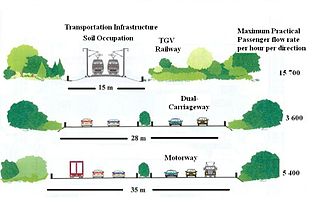 W
WSustainable urban infrastructure expands on the concept of urban infrastructure by adding the sustainability element with the expectation of improved and more resilient urban development. In the construction and physical and organizational structures that enable cities to function, sustainability also aims to meet the needs of the present generation without compromising the capabilities of the future generations.
 W
WA wind farm or wind park, also called a wind power station or wind power plant, is a group of wind turbines in the same location used to produce electricity. Wind farms vary in size from a small number of turbines to several hundred wind turbines covering an extensive area. Wind farms can be either onshore or offshore.